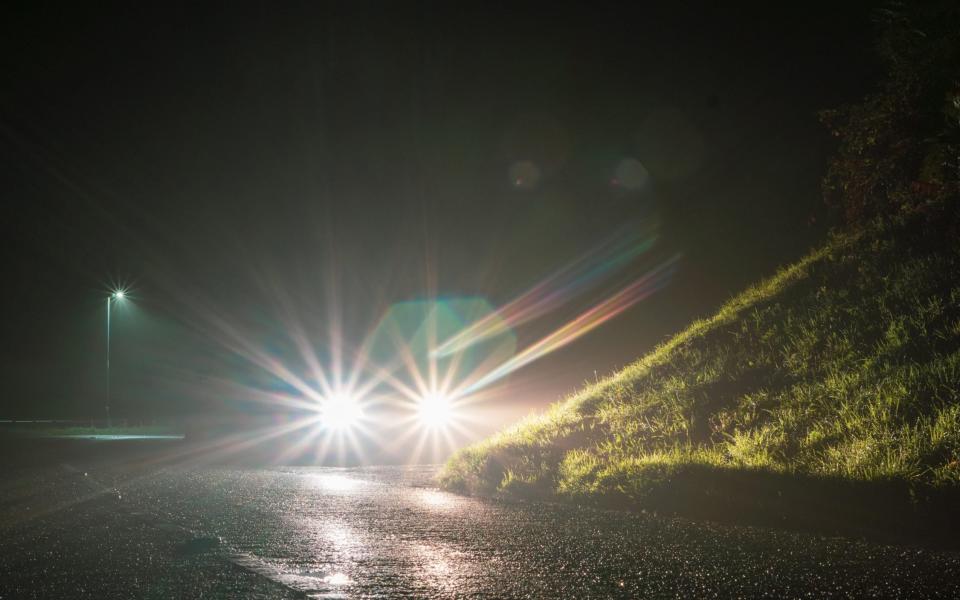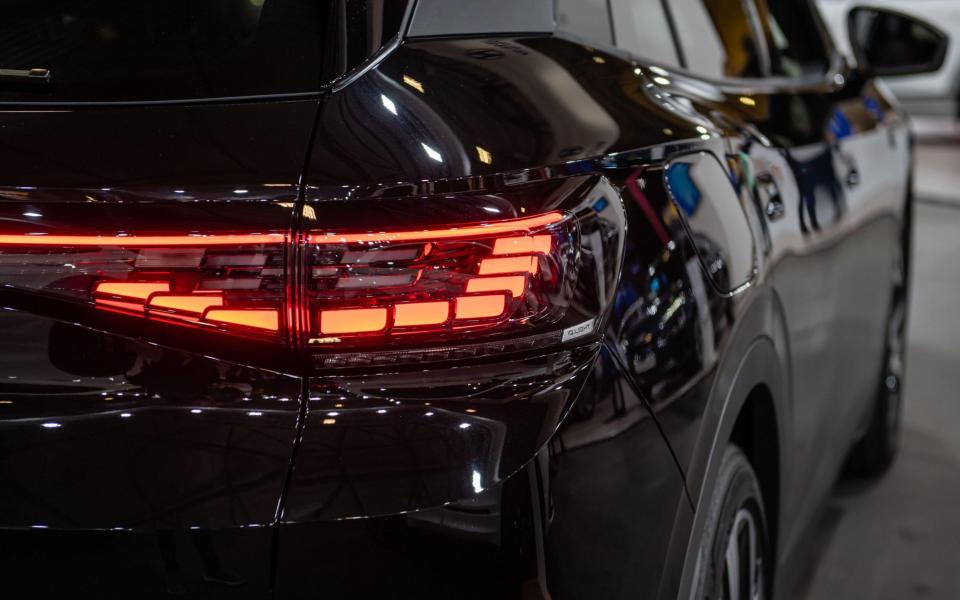As the nights draw in and more of us drive for longer after dark, we will be exposed to more blinding headlights and concerned drivers are taking action. Fourteen thousand have signed an online RAC petition calling for a review of the brightness of car headlights for safety.
The good news is that in response the Government has commissioned an independent investigation into the matter. The not so good news is that there is no indication of when it might report back.
What can the government do?

Quite a lot, in fact. Nicholas Lyes, director of policy and standards at the charity IAM Roadsmart, believes the Government could use the annual MOT test to help drivers. He said: “We could change the MOT test to fail a car if it emits a certain light that could be dangerous to road safety.”
One of the benefits of Brexit is that Type Approval, the regulations that every new vehicle sold in the UK must comply with for consumer safety, is now in the hands of the Government.
Type Approval governs headlights, but things get a little more complicated when lighting is agreed at the United Nations level for global uniformity. This may make you cringe, but the UN has already taken action on glaring headlights.
Anyone who has driven a car with LED headlights knows how effective they are at providing better visibility on dark roads. But that’s only if they’re facing down towards the asphalt. Load up the trunk of your car and your headlights will be slanted upwards, dazzling oncoming drivers.
To prevent this, the UN has decided that automatic headlight leveling will be mandatory in all new vehicles from 2027.
Changes won’t happen overnight
Road safety experts I spoke to welcomed the Government’s work. The RAC’s Rod Dennis explained: “This is just the beginning. There’s a long way to go. And even then, any changes will only affect new vehicles. But we want to get the work done and then move on. We’re cautiously optimistic.”
Lyes, from IAM Roadsmart, added: “We think this is a very positive thing. It’s a real problem and a very complex one, so it’s going to be hard to work out what’s best to do, but it’s very pleasing that they’re doing the research in the first place.”
Dr Paramdeep Bilkhu, clinical consultant at the College of Optometrists, said: “More research is needed to understand exactly which headlight factors cause glare so that we can identify what needs to be changed while still reaping the benefits of better light technology.”
Is this a UK-only problem?
We are not the only country looking to tackle the issue of headlight glare. “This is an issue that goes beyond the UK,” said Dennis. “We are in contact with other motoring clubs across Europe and they are all concerned about it.
“The German government is looking into this and the FIA (Federation Internationale de l’Automobile) is looking into this across Europe. Any solution will not be specific to the UK.”
What have studies on headlight glare found?


The RAC has been asking drivers about glare from headlights since 2018. Its latest findings, published earlier this year, show that 85 per cent of drivers affected by glare think the problem is getting worse.
Nine in 10 drivers (91%) complain of being dazzled while driving, with 74% saying it happens regularly. Two in three (67%) feel they have to slow down significantly until their vision clears. Of these, 5% claim they have almost been involved in a collision due to headlight glare.
The dazzling headlight problem is even restricting drivers’ mobility: road safety charity IAM Roadsmart recently surveyed its members. Four per cent of its advanced qualified drivers said they had stopped driving in the dark, while a third (31 per cent) claimed they were driving less at night than they used to.
What causes headlight glare?
Dr. Bilkhu said patients are increasingly complaining about the glare of headlights. “We know that glare is more common among older drivers because the natural lens in the eye becomes increasingly cloudy with age,” he said. “This can increase the effect of light scattering and make glare worse.
“For older people, recovery from glare can take several seconds and the distance travelled in a moving vehicle during this time can be significant, meaning the potential risk of an accident is higher. There is research to suggest that glare can affect hazard recognition while driving, including visibility of pedestrians, so it poses a safety risk.”


Does headlight glare cause many accidents?
We’ve all been there when an oncoming car has its high beams on. You flash them in case the driver forgets, and they return the favor – their doorbell is on – and prove that their high beams weren’t on, but their low beams were poorly adjusted or simply too bright.
Yet government figures on road accidents show that glare from headlights is not a major contributing factor. The latest data shows there were three fatal crashes caused by headlight glare in 2022. 38 of these were due to drivers being blinded by the sun.
But the data is flawed because it often comes from police reports at crash scenes, which are not comprehensive. Dr Bilkhu added: “We know that flashes are often under-reported when this type of data is collected.”
Four reasons why headlights dazzle
As Lyes points out, it’s a complicated subject. Cars are increasingly equipped with LED lights because they draw less electrical current, which is good for economy (fuel or battery). They’re more controllable, allowing for all sorts of fancy features like welcome screens when you approach the car. They’re also smaller, giving designers more freedom.
They are also brighter than old-style halogen lights and have a more focused beam that our eyes have a harder time adjusting to at night.


Get in a modern car and you’ll be amazed at how much brighter the lights are compared to older models. Don’t worry, you can buy LED bulbs online to replace the halogen bulbs in older cars. Better yet, they’re usually less than £20 for a pair.
But they are considered illegal because there is no legislation governing replacing halogen bulbs with LEDs; the regulations only state how bright the lights can be. And the lack of regulations governing LED bulbs used in place of halogens means they can be super bright and dazzle oncoming drivers. But there’s nothing stopping owners from fitting them, other than the knowledge that they are illegal and (if the driver is unlucky) could be deemed failed by MOT testers.
Poorly adjusted headlights of all kinds also play a part. According to information from the Driver and Vehicle Standards Agency, around 5 per cent of cars fail their MOT every year because their headlights are not adjusted properly.
Finally, the growing popularity of SUVs is thought to be contributing to the problem. These often have a longer stance than more conventional models, with their headlights positioned at eye level for drivers in regular hatchbacks and sedans.
The problem caused by elevated vehicles seems to be confirmed by official statistics. These show that 179 drivers said their road collisions were caused by overly bright headlights, while there were two bus drivers and only one HGV driver. This means that the higher you are from the road, the less likely you are to be dazzled. More bad news for regular car drivers then.